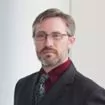Ariosa Diagnostics, Inc., et al. v. Sequenom, Inc., et al.
By a poll of active justices, the U.S. Court of Appeals for the Federal Circuit denied a petition for an en banc rehearing of Ariosa Diagnostics, Inc., et al. v. Sequenom, Inc. et al. ( IP Update, Vol. 18, No. 7) and issued two concurrences and one dissent. Previously, the Federal Circuit had ruled that under Mayo Collaborative Services v. Prometheus Labs., Sequenom's patent claims for prenatal diagnostic methods using maternal blood samples were not patent-eligible under 35 U.S.C. § 101 because they were based on the analysis of a natural phenomenon using well-known techniques. Ariosa Diagnostics, Inc., et al. v. Sequenom, Inc., et al., Case Nos. 14-1139. -1144 (Fed. Cir. Dec. 3, 2015) (Lourie J., concurring with Moore J., joining) (Dyk, J., concurring) (Newman, J., dissenting).
Judge Lourie's concurrence echoed Judge Linn's concurrence from the original panel decision, bemoaning the clear, groundbreaking advancement offered by the invention, but the clear necessity to invalidate it under Mayo. Judge Lourie argued that the claims were not abstract, did not improperly claim natural laws and relied on performing physical steps on physical material. But the physical steps were well-known techniques to measure natural phenomenon and therefore Mayo required invalidation.
In his concurring opinion, Judge Dyk agreed that a framework like that presented by Mayo and Alice Corp. v. CLS Bank is essential to prevent highly anticompetitive patents that exploit natural phenomenon or abstract concepts. But, while this framework works well for well-known phenomenon or concepts, it conflicts with other Supreme Court precedent and overlooks the possibility that inventive concepts can come from discovering something new in nature. He suggested that claims involving new laws of nature be allowed when the claims are narrow, specific and actually reduced to practice.
Judge Newman dissented on the grounds that Mayo allowed for claims applying natural phenomenon, which Sequenom did by claiming a diagnostic rather than the scientific fact of the discovery, and that Mayo was distinguishable because the technology there lacked any innovative advance.
Practice Note: Judge Lourie's concurrence (like Judge's Linn's concurrence from the panel decision) appears to be a clear plea to the Supreme Court to modify its ruling in Mayo, Judge Lourie concluded that the Mayo rule against claims based on natural phenomenon and conventional techniques was "unsound," but that his hands were effectively, and legally, tied. Considering tone of the concurrences, as well as the evident disagreement on interpretation of Supreme Court precedent, it would seem that a writ of certiorari is almost certain. In the meantime, practitioners may want to consider Judge Dyk's suggestions on narrow patent drafting. Were such a case to come before the Federal Circuit for resolution, it would present a path for an appellate decision that would give the Supreme Court an opportunity to revisit the Mayo/Alice framework. Interestingly, Judge Dyk recognizes that even his suggested patent eligibility framework would not have saved the Sequenom patents because he believes, like Judge Lourie, that the claims are overbroad.
The content of this article is intended to provide a general guide to the subject matter. Specialist advice should be sought about your specific circumstances.

